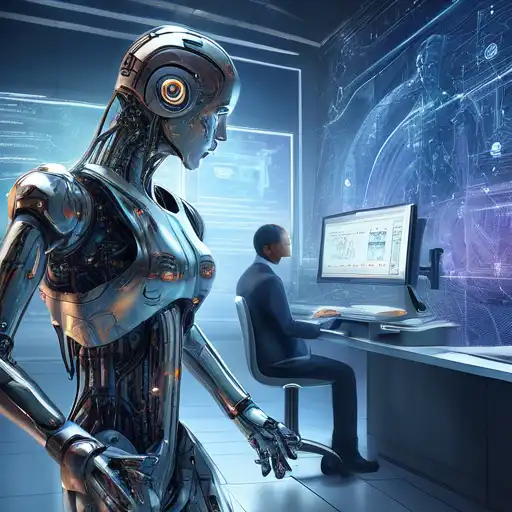Introduction to AI and Machine Learning
In the rapidly evolving world of technology, Artificial Intelligence (AI) and Machine Learning (ML) are two terms that often come up in discussions. While they are related, they are not the same thing. This article aims to demystify these concepts and highlight the key differences between them.
What is Artificial Intelligence?
Artificial Intelligence is a broad field of computer science focused on creating systems capable of performing tasks that typically require human intelligence. These tasks include problem-solving, recognizing speech, learning, planning, and understanding natural language. AI can be categorized into two types: Narrow AI, which is designed to perform a narrow task (e.g., facial recognition or internet searches), and General AI, which can perform any intellectual task that a human can.
What is Machine Learning?
Machine Learning is a subset of AI that involves the development of algorithms that allow computers to learn from and make decisions based on data. Instead of being explicitly programmed to perform a task, ML systems use statistical techniques to learn patterns in data and improve their performance over time. ML is particularly useful for applications where designing and programming explicit algorithms is infeasible, such as email filtering, detection of network intruders, and computer vision.
Key Differences Between AI and Machine Learning
While AI and ML are closely related, there are several key differences:
- Scope: AI has a broader scope, aiming to simulate human intelligence in machines. ML, on the other hand, focuses specifically on enabling machines to learn from data.
- Dependency: AI can exist without ML, but ML cannot exist without AI. ML is a pathway to achieving AI.
- Applications: AI applications range from simple tasks like chatbots to complex ones like autonomous vehicles. ML is primarily used in data-driven tasks like predictive analytics and personalized recommendations.
How AI and Machine Learning Work Together
Despite their differences, AI and ML often work together to create intelligent systems. For example, an AI-powered chatbot may use ML to improve its understanding of human language over time. Similarly, autonomous vehicles use AI to make decisions and ML to learn from vast amounts of driving data.
Future Trends in AI and Machine Learning
The future of AI and ML is incredibly promising, with advancements in technology leading to more sophisticated and capable systems. Some of the key trends to watch include the rise of deep learning, the increasing importance of ethical AI, and the integration of AI and ML in more industries, from healthcare to finance.
For those interested in diving deeper into these technologies, exploring our resources on AI and ML can provide valuable insights and learning materials.
Conclusion
Understanding the difference between AI and Machine Learning is crucial for anyone looking to navigate the tech landscape effectively. While AI encompasses the broader goal of creating intelligent machines, ML is a critical tool in achieving that goal, focusing on learning from data. As technology continues to advance, the synergy between AI and ML will undoubtedly lead to groundbreaking innovations that will shape our future.
